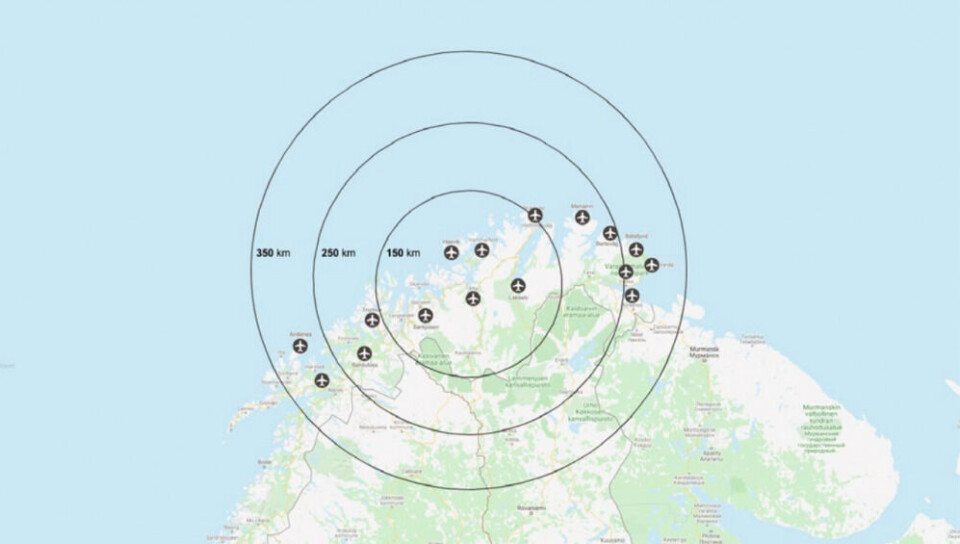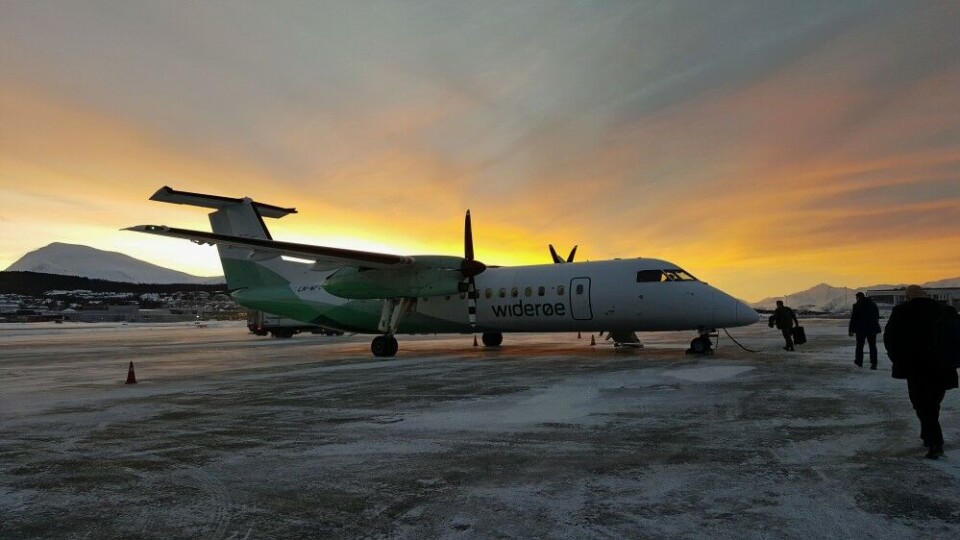
Electric aviation ready for take-off in Norway by 2030, report says
Few places in Europe are better suited for commercial scheduled flights with electric planes than Norway’s northernmost region.
There are 16 airports in radius for short-haul flights of less than 350 kilometers on the top of Norway.
The first planes running on batteries will be available before 2030 and could be very well suited for the network of airports inside the Arctic Circle, a report by Avinor and the Norwegian Civil Aviation Authority suggests.

The report was presented to minister of transportation, Knut Arild Hareide, this week.
“The world is facing a climate crisis and it is up to us in the transportation sector to make the biggest reductions in emissions. Helping to achieve this is my primary task as Minister of Transport and Communications. We must deliver on this, and electric aircraft may be part of the solution,” Hareide said in a press release.
Pioneering sales of electric cars over the last few years, Norway now aims to be a “driving force and arena for the development, testing and early implementation of electrified aircraft,” reads one of the suggested objectives in the conclution of the study.
The goals are clear; by 2030, the first ordinary domestic scheduled flights will be operated with electrified aircraft. And by 2040, all civil domestic aviation in Norway will be electric.
With those goals, emission of greenhouse gasses will be reduced by at least 80% compared with 2020.
“In order to ensure that high-quality transport services continue to be provided in Norway, it is in Norway’s own interest - from the perspective of both climate, district and transport policies - that zero and low-emission aircraft are developed which are capable of operating on the unique Norwegian short-haul network under the prevailing meteorological conditions in the country”, said Director General of Civil Aviation Authority of Norway, Lars Kobberstad.
Director Dag Falk-Pedersen of Avinor, the country’s state company operating most airports pointed to Norway’s abundant access to renewable electricity when presenting how to charge the aircrafts with zero-emission solutions.
“The unique short-haul network, active and interested stakeholders and political will to electrify the transport sector, makes Norway both well-suited and recognized as a very interesting test area and the first market for electrification of aviation,” Falk-Pedersen said.

The report points to several manufacturer currently developing planes with up to 19 seats that run on batteries only.
A prototype plane by Israeli Eviation has already presented a 9 seats passenger plane with a battery package of 900 kWh, maximum speed of 500 km/h (240 knots) and a range of almost 1,000 kilometers (540 nautical miles).
That will in practice, due to the demand of extra range in case of bad weather, mean an operational range of 200 to 300 kilometers.
Distances between airports in Troms and Finnmark region are often not more than 10 to 30 minutes flights.
With Alta in the center, the report indicates that all 16 airports that today operates daily commercial scheduled flights are within a range of 350 kilometers.
















